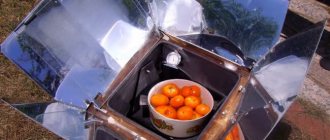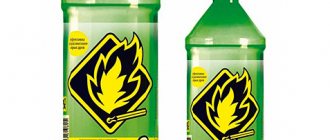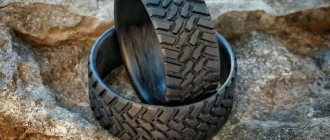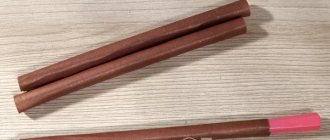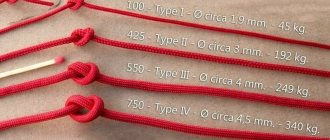Many tourists, hunters and fishermen, in order to boil water at a rest stop, had to decide how to light a fire in windy weather. More than once or twice they thought about how to make it so that they did not have to constantly adapt to the changing wind, placing firewood on the right side, or moving a stick with a pot hanging on it. And the way out of this situation is not difficult. It is enough to light a “Finnish candle”.
This memorable name hides a whole group of wood structures that allow you to warm up and cook food in camp conditions with sufficient comfort. The ability to make a Finnish candle, both among tourists and among hunters, fishermen and simply lovers of outdoor recreation, is not common. Let's try to fix this. So, let's start.
Today there are many names for this method of making a fire:
- Finnish candle;
- Swedish candle;
- Indian candle;
- hunting candle;
- wooden primus stove.
Underneath them are hidden fires that are fundamentally similar in design, built inside a specially prepared chock or between several combined chocks standing vertically.
Application area
Such options are suitable for both cooking and heating.
Moreover, a full-fledged fire can be lit even with a lack of fuel, sometimes making do with just one log.
This long-lasting fire withstands windy weather well, it is quite compact, economical, does not require the installation of additional devices for cooking and can withstand precipitation quite well. Since even heavy rain, with the pot on the fire, will not be able to extinguish it.
During its use, many changes were made to the design, depending on the conditions of use. The classic “Finnish Candle” fire originally consisted of a log split into two halves, which were then fastened together in places where they were chipped using wire, rope or other available materials. Over time, for better combustion, the chock was no longer split into two halves, but into more parts. Then, instead of splitting, they began to make cuts and even assemble a fire from several logs pressed vertically against each other.
Three logs placed side by side
To make this candle, three logs of equal height are cut out. On each of the three logs, the bark is removed from one side and shallow cuts are made to damage the wood fibers.
The logs are placed horizontally, one next to the other, so that the cleaned sides are as close to each other as possible and point upward. Kindling is placed on the logs and the fire is started.
When some of the logs under the fires become charred and begin to actively smolder, the logs are placed on their ends and the smoldering parts are pressed against each other. The gap between the logs is filled with embers from burnt brushwood and the brushwood itself. After this Finnish candle enters the operating mode, there is no need to add additional fuel: the coals of the logs heat each other, due to which a stable flame appears in the center of the structure.
An example of a candle made from three logs, not fastened to each other in any way.
The dishes are installed on top without additional tricks, since the gaps between the logs are sufficient to remove burnt gases from the combustion center.
If the logs are slightly different in length and for this reason do not allow you to place dishes on top of them, small depressions are made in the ground for longer logs. This way, when setting up a fire, the tops of the logs are leveled and allow you to place dishes on them without any problems.
In order to extinguish such a fire-candle, you simply need to move the logs away from one another.
How to make a Finnish candle
First of all, you need to decide on the design. This depends on several factors:
- the presence of thick logs and good tools at the resting place;
- the presence of wire for tying thin logs and split logs;
- soil composition;
- number of people in the group;
- the need to dry things.
Almost all options are divided into two groups according to manufacturing method:
- from one fairly thick piece of wood;
- from several logs with a smaller diameter.
Now let's proceed directly to manufacturing.
Bonfire of Nodya - what is it
The Nodya fire is a type of taiga fireplace, which is used for spending the night in low temperatures. Its main advantage is its long burning, or more precisely, smoldering, which lasts all night and does not require special care. This is a kind of battery, only not at home, but in the forest.
If circumstances are such that a tourist or even a whole group is forced to stay in the forest for the night on a cold winter night, then this type is a suitable option. There are known cases of successful overnight stays even without sleeping bags.
Solid block with cuts
To do this, take a piece of wood with a diameter of 20 cm. We make cuts in it so that we get several lobes. Usually their number ranges from two to eight. Then, in the center of the log, using wood chips and available materials, a fire is lit. To do this, you can lightly chop off the central parts of the lobes.
Gradually the fire spreads down the cuts. The fewer cuts, the longer the combustion, the more of them, the hotter the fire. The cuts are made to a depth of up to 3/4 of the height. Oxygen penetrates through the cuts to the combustion site. Over time, this version of the Finnish candle burns out the upper middle part, and the open fire turns into smoldering. After this, cooking will be quite difficult, but for heating it will be quite suitable.
Are there any disadvantages?
Now let’s see if there are any downsides to such an interesting fire. As it turns out, they exist too
It is no less important to know about them than about the advantages
To begin with, it is worth noting that it will not be possible to make a fire with a Finnish candle without tools. You must have either a chainsaw or an axe. But an ordinary fire can always be lit - there are many ways to break even fairly thick logs using improvised objects. As a last resort, you can always simply burn it out by placing the middle in the fire, and then placing the remaining two halves there.
Another disadvantage is the inability to dry clothes. It was already said above that the heat here goes up. And in order to dry wet things, you need to have an open flame, from which heat flows in different directions.
Finally, you won’t be able to really get warm at all for the same reason that prevents you from drying your clothes.
Therefore, although a Finnish fire candle is a very good solution, it still does not solve all problems - novice tourists should remember this.
Split Wood
This option is very similar to the first. In it, all parts of the initially chopped lump are tightly connected with wire to each other. First, the central parts of the lobes are slightly planed. This will provide enough wood chips for ignition and create channels for air draft. After this, the parts of the chock are tightly tied together with wire, starting from the middle.
You need to tighten the bottom especially carefully, otherwise your fire will fall apart as it burns out. You can also use rope instead of wire, but this option is less reliable. Please note one nuance: unlike sawn wood, the chips are pressed very tightly. There is practically no fire coming through the sides, so this option cannot be used as a heater. But it burns longer without disintegrating, it can be moved quite easily from place to place if necessary, and it has a fairly strongly directed flame.
Field method
Suppose there is no saw, but you need a Finnish candle. How to do it in this case? Well, there is an ax in nature anyway. The log of wood chosen for this purpose is split like regular firewood, only a little more diligently so that the logs do not vary too much in thickness. Then they gather into the original log, only around a thick branch - this will be the hearth. Below, closer to the ground, and approximately in the middle, the Finnish candle is tied, preferably with wire - it will definitely not burn out. But if you don’t have it, twine, fishing line, and flexible rods will do. It is especially important to tighten it securely at the bottom, since in the middle the logs will burn out faster, and without good fixation near the ground, your fire will fall apart. The central branch is pulled out three-quarters from below and sawed off, after which the Finnish candle is placed on the ground. By the way, if the original log is not too massive, you can use this branch as a leg and simply stick it into the ground.
Chock with two holes
As the name suggests, a couple of holes are made in a vertically standing block. One from top to bottom, to the same length as the cuts in the first option, at 3/4 of the height. The other is at a right angle to the first at a height of 1/4 from the bottom of the block, so that the holes are connected.
You can ignite both through the top hole and through the bottom. This method is the most effective for cooking, but also the most difficult to manufacture due to the need to use additional tools.
A place for a node and a bivouac with it
Organizing an overnight stay requires preparation. A tourist must think through everything down to the smallest detail. Despite the fact that Nodya is famous for the fact that it does not require special care, before its construction it is recommended to carefully select and prepare the site.
The heat released from the fire should be concentrated in one space, thereby warming it up. It is necessary to think over a shelter that will not allow warm air to escape, and also protect from heavy rain and wind. Safety is of no small importance when preparing a bivouac. The artificial shelter must be positioned in such a way that it does not catch fire.
Important points when constructing a node
If the trees are not laid correctly, they can roll around their axis inside the fortifications. To prevent this from happening, you need to leave small knots. An alternative is to make a small indentation in the log that will align with the pole.
When the fire is already burning, it’s time to organize a sleeping place. When organizing an overnight stay for one or two people, it is recommended to place their sleeping places parallel to the fireplace.
Note! In order for the sleeping place to be heated as much as possible, it is recommended to place it on a 2–3-story structure made of logs. Trees will reduce the rate of heat transfer. In addition, such a bed will protect you from a burning log that unexpectedly rolls down.
If we are talking about overnight accommodation for one tourist, then in order for all the heat to go to him, it is necessary to create a heat-insulating screen. He will focus all the heat on the tourist. By placing it at a slight angle above your sleeping place and fire, you will protect yourself from precipitation.
Assembly of thin logs
This option is suitable if you don’t have a tool. In this case, three to five logs are placed on their ends and tied in a vertical position.
Such a stove is easier to manufacture and ignites much easier, which is important if you have insufficient experience.
The first three options require a log with a diameter of 20 to 30 centimeters. Large diameters are not advisable. The height should be approximately twice the diameter. With this ratio of diameter and height, your hearth will be the most stable.
Fuel preparation and collection
When stocking up on firewood for lighting a fire, you need to give preference to the types of wood that are best suited for this. If you need to make a fire in dry weather, you can use dead wood as fuel, but you need to remember that deciduous wood is most often rotten, such material will not catch fire.
Another option for ignition is dead wood. In a deciduous forest, birch is perfect for a fire. When burned, it leaves very good coals that will retain heat for a long time. In principle, any dry wood burns well, but some species do not produce much heat. As for conifers, which are most often found in the taiga, they burn very well, and after burning out, such a fire maintains a high temperature for a long time.
Useful tips
Now let’s take a closer look at perhaps the most important issue. How to light a fire, which is described above. Even for experienced tourists, this problem will arise during their first attempts. How can you make a Finnish candle burn faster? Yes, very simple. It is enough to remember the elementary laws of nature:
- the flame burns only if there is a sufficient supply of oxygen;
- heated air always tends upward.
Therefore, for successful combustion it is necessary to ensure that these two conditions are met. Namely, there must be at least a small gap between the parts of the chopped wood so that the flame moves freely upward, and there must be a free flow of air from below. This can be achieved in the following ways:
- slightly cut off the central parts of the chopped logs with a knife or an ax;
- using available means (for example, stones or a pair of thin sticks) raise the fire above the ground;
- chop off the lower parts of at least two adjacent parts so that a small channel for air flow is formed into the center of the fire.
The second option is not very successful, since a fire lit in this way will not be stable enough.
Security measures
Although a taiga candle looks neat when burning, it is important to adhere to safety rules when making and lighting it.
The place to use the Finnish candle should be chosen away from dry branches, bushes and old trees. The area must be perfectly cleared of everything that could cause a fire. This is especially true for dry leaves and grass, cones and pine needles. It is best to light such a fire on clean ground, grass, areas near water bodies, on stone or sand. It is better to dig up the area around the candle or cover it with stones.
If you need to light one large fire, it is better to use several logs, which are placed at a distance from each other. This will reduce the risk of fire. Make sure that the tent and all household items are at a distance of 3 meters from the fire. It is also not recommended to sit close to the fire, especially if the person is half asleep.
Although some types of Finnish candles can be used on peat bogs to avoid fire, this is not recommended. If special liquids are used to light a candle, then after use the containers with them should be placed at the maximum safe distance from the fire.
If you need to store the prepared candle, it is better to temporarily cover the log with polyethylene or place it in the corner of the tent. The log should be laid tightly to the ground to prevent it from getting wet. If precipitation occurs while using the candle, placing dishes with cooked food on top will help protect it from extinguishing.
All traces of burning after the picnic must be eliminated. Before leaving the recreation area, you should make sure that the fire is completely extinguished.
Cooking
Finally, let's move on to the most “delicious” part. How to cook on a Finnish candle? It turns out that it’s also nothing complicated. Any cookware that can withstand cooking over a fire will do.
But we must not forget that the fire must be provided with a way out. If you place a saucepan or kettle directly on the chock, the fire will stop burning normally and the water will not boil. This issue can be resolved as follows:
- place a stand on top of the log in the form of two freshly cut sticks up to 5 cm thick;
- When assembling, two or three parts of your candle should be higher than the rest by the same distance.
In the second case, this can be achieved in different ways. If we assemble a candle from several thin logs, then in advance, when cutting, two of them are made longer than the others. When placed vertically, they will provide the necessary gap between the dishes and the surface. Or, when assembling, you can move two logs slightly upward compared to the rest. You can do the same in the case of chopped logs. This method allows you to simultaneously provide two channels for air supply from below. And the fire will burn more steadily and hotter.
Happy travels!
What is it suitable for?
It is very important that the Finnish fire copes well with various functions. The main one is cooking.
A pot or kettle has to be hung on a regular fire using a tripod, a crossbar on slingshots, or other devices. But if you use a Finnish candle, the problem solves itself. After all, the fire is also a stand - the pot can be safely placed directly on top of the flame. The main thing is to make sure that the split log is stable enough. Here, fire and heat do not go in different directions, but exclusively upward, which allows you to boil water or cook food much faster
The main one is cooking. A pot or kettle has to be hung on a regular fire using a tripod, a crossbar on slingshots, or other devices. But if you use a Finnish candle, the problem solves itself. After all, the fire is also a stand - the pot can be safely placed directly on top of the flame. The main thing is to make sure that the split log is stable enough. Here, fire and heat do not go in different directions, but exclusively upward, which allows you to boil water or cook food much faster.
If you are not interested in cooking, but simply in lighting, then in this case this fire will be a good choice. The main thing is not to place a pot or other objects on top. In this case, the flame will burst out from above, which is why the fire will really look like a real candle. The flames are quite long and dissipate the darkness around well. In addition, you can always put two or three of these candles or even more to illuminate the entire camp area. The main thing is not to leave them unattended - if a log falls, a real fire may well start.
Not as effective, but you can use a fire just for heating. Of course, one Finnish fire is not enough for a large group of people, but two or three people will be able to warm their hands over the flame.
Purpose of the fire
The unique design of the Finnish candle allows you to build a real fire using a minimum amount of fuel, sometimes one log is enough for this. In addition, such a fireplace is not afraid of precipitation (if the combustion center is covered) or strong wind.
Fields of application while hiking:
- Lighting. A smoldering fire will light up the place where you spend the night and will not go out in case of sudden rain or gust of wind.
- Heating. In cold weather, it quickly heats up and guarantees constant safe warmth and comfort.
- Orientation. When going on a distant walk, you can easily determine your location using a taiga fire and easily find your way back.
Interesting fact. A log fire, in contrast to the classic one, leaves almost no traces, and therefore does not harm the environment.
For culinary purposes
In a natural environment, using a Swedish candle it is possible to:
- cook hot food in a cauldron;
- to boil water;
- reheat prepared food;
- process the game carcass.
It is worth noting that such a “log stove” is equally functional under any circumstances, including in windy areas. Moreover, it is not necessary to know, since the pot can be placed directly on the log.
Cooking over a fire
For landscape decoration
Often, fans of wildlife use taiga candles for decorative and practical purposes. After all, such a fire, burning in the dark, creates a special atmosphere of comfort, which cannot be achieved by any artificial light sources. In addition, a Finnish candle placed in the recreation area will decorate the holiday and create a romantic mood.
For repair and construction use
Since such a fire is extremely simple to set up, it is easy to transport, and the logs can be prepared in advance, many specialists use it to quickly complete individual jobs:
- heating bitumen, roofing felt;
- firing, heating of metal;
- drying various surfaces.
Important! The Swedish candle provides a safer burn than traditional fires. Perhaps that is why this type of fire has gained immense popularity among lovers of outdoor activities in natural conditions.



